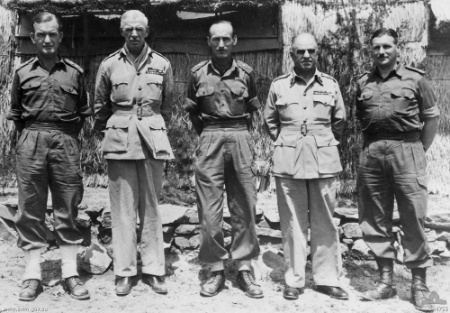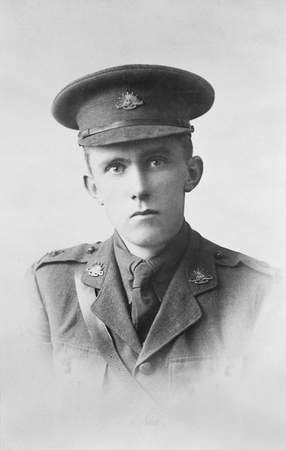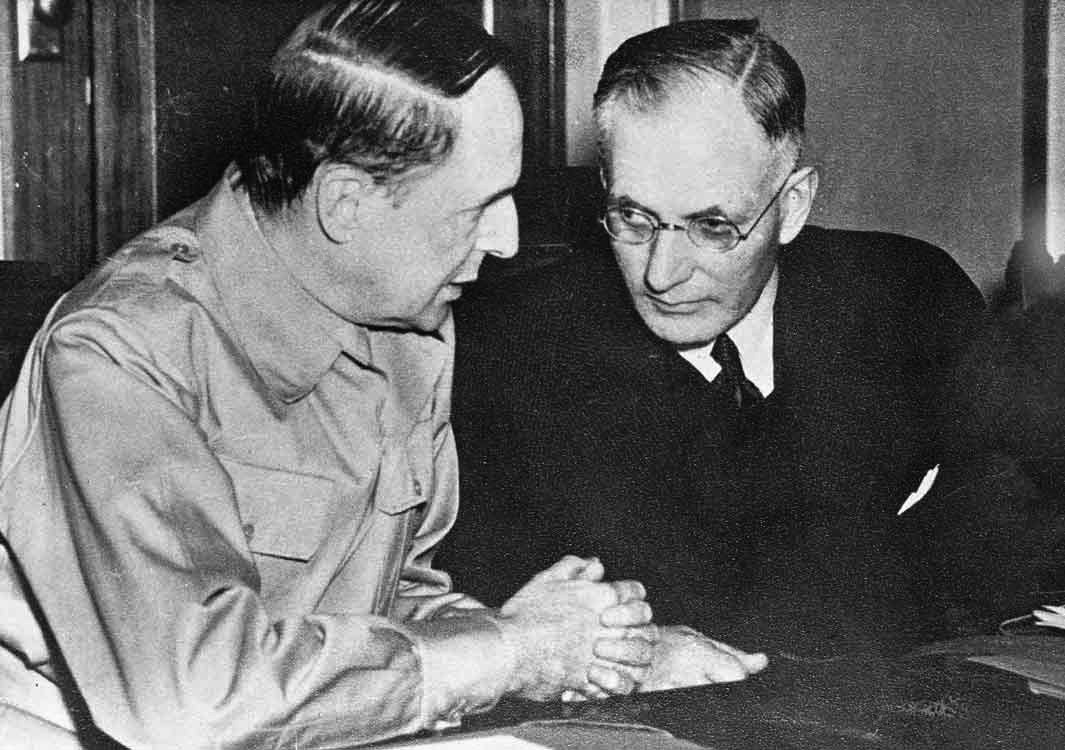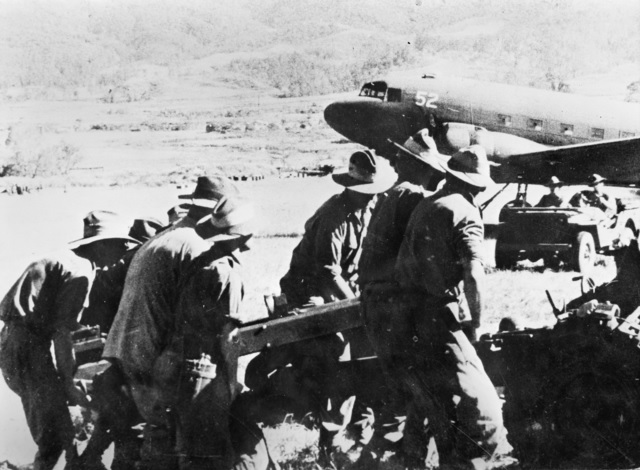|
Landing At Nassau Bay
The Landing at Nassau Bay was an amphibious landing by Allied forces at Nassau Bay, Papua New Guniea, Nassau Bay during the New Guinea campaign of World War II that took place between 30 June and 6 July 1943. The operation was undertaken so that Allies could secure a beachhead to establish a supply point to shorten their supply lines for the proposed attack on Salamaua as part of the Salamaua–Lae campaign and resulted in a battalion-sized force of US infantry and supporting elements being landed largely unopposed on the south-eastern flank of the battle zone. Due to bad weather, the landing force suffered heavy equipment losses with most of the US landing craft being wrecked in heavy seas. Nevertheless, the US troops were able to secure a lodgement from where they subsequently broke out, advancing north as part of a flanking drive on Salamaua, which was launched in conjunction with attacks by Australian forces further west. Australian forces also provided support during the land ... [...More Info...] [...Related Items...] OR: [Wikipedia] [Google] [Baidu] |
World War II
World War II or the Second World War (1 September 1939 – 2 September 1945) was a World war, global conflict between two coalitions: the Allies of World War II, Allies and the Axis powers. World War II by country, Nearly all of the world's countries participated, with many nations mobilising all resources in pursuit of total war. Tanks in World War II, Tanks and Air warfare of World War II, aircraft played major roles, enabling the strategic bombing of cities and delivery of the Atomic bombings of Hiroshima and Nagasaki, first and only nuclear weapons ever used in war. World War II is the List of wars by death toll, deadliest conflict in history, causing World War II casualties, the death of 70 to 85 million people, more than half of whom were civilians. Millions died in genocides, including the Holocaust, and by massacres, starvation, and disease. After the Allied victory, Allied-occupied Germany, Germany, Allied-occupied Austria, Austria, Occupation of Japan, Japan, a ... [...More Info...] [...Related Items...] OR: [Wikipedia] [Google] [Baidu] |
New Guinea Campaign
The New Guinea campaign of the Pacific War lasted from January 1942 until the end of the war in August 1945. During the initial phase in early 1942, the Empire of Japan invaded the Territory of New Guinea on 23 January and Territory of Papua on 21 July and overran western New Guinea (part of the Netherlands East Indies) beginning on 29 March. During the second phase, lasting from late 1942 until the Japanese surrender, the Allies of World War II, Allies—consisting primarily of Australian forces—cleared the Japanese first from Papua, then New Guinea, and finally from the Dutch colony. The campaign resulted in a crushing defeat and heavy losses for the Empire of Japan. As in most Pacific War campaigns, disease and starvation claimed more Japanese lives than enemy action. Most Japanese troops never even came into contact with Allied forces and were instead simply cut off and subjected to an effective blockade by Allied naval forces. Garrisons were effectively besieged and denied ... [...More Info...] [...Related Items...] OR: [Wikipedia] [Google] [Baidu] |
John Wilton (general)
General (Australia), General Sir John Gordon Noel Wilton, (22 November 1910 – 10 May 1981) was a senior commander in the Australian Army. He served as Chief of Army (Australia), Chief of the General Staff (CGS), the Army's professional head, from 1963 until 1966, and as Chairman of the Chiefs of Staff Committee (CCOSC), forerunner of the role of Australia's Chief of the Defence Force (Australia), Chief of the Defence Force, from 1966 until 1970. His eight-year tenure as senior officer of first the Army and then the Australian military spanned almost the entire period of the nation's Military history of Australia during the Vietnam War, involvement in the Vietnam War. Born in Sydney, Wilton entered the Royal Military College, Duntroon, in 1927. Owing to lack of opportunity in the Australian military at the time, he took a commission in the British Army following his graduation in 1930. He spent most of the remainder of the decade with the Royal Artillery in British R ... [...More Info...] [...Related Items...] OR: [Wikipedia] [Google] [Baidu] |
Frank Berryman
Lieutenant general (Australia), Lieutenant General Sir Frank Horton Berryman, (11 April 1894 – 28 May 1981) was an Australian Army officer who served as a general during the Second World War. The son of an Railroad engineer, engine driver, he entered Royal Military College, Duntroon, Duntroon in 1913. His class graduated early after the First World War broke out, and he served on the Western Front (World War I), Western Front with the field artillery. After the war, he spent nearly twenty years as a major. Berryman joined the Second Australian Imperial Force (AIF) on 4 April 1940 with the rank of full colonel, and became General Staff Officer Grade 1 (GSO1) of the 6th Division (Australia), 6th Division. He was responsible for the staff work for the attacks on Bardia, Libya, Bardia and Tobruk. In January 1941, Berryman became Commander, Royal Artillery, 7th Division (Australia), 7th Division, and was promoted to brigadier. During the Syria-Lebanon campaign, he commanded "B ... [...More Info...] [...Related Items...] OR: [Wikipedia] [Google] [Baidu] |
Bulolo Valley
The Bulolo Valley is a geographical area in Bulolo District, Morobe Province, Papua New Guinea. The Bulolo River and its tributaries form the extent of the valley before it meets with the Markham Valley The Markham Valley is a geographical area in Papua New Guinea. The name "Markham" commemorates Sir Clements Markham, Secretary of the British Royal Geographical Society - Captain John Moresby of the Royal Navy named the Markham River after Sir .... History Gold mining and forestry form the main industries in the valley. References Valleys of Papua New Guinea Morobe Province {{MorobeProvince-geo-stub ... [...More Info...] [...Related Items...] OR: [Wikipedia] [Google] [Baidu] |
Ross McKechnie
Archibald Ross MacKechnie (December 24, 1895 – August 15, 1967) was an American college football coach and United States Army officer. He served as the head football coach at Mississippi State College—now known as Mississippi State University—from 1933 to 1934, compiling a record of 7–12–1. A captain in the Army at the time, MacKechnie also had responsibility for instructing the Reserve Officers' Training Corps program at the time. During World War II World War II or the Second World War (1 September 1939 – 2 September 1945) was a World war, global conflict between two coalitions: the Allies of World War II, Allies and the Axis powers. World War II by country, Nearly all of the wo ..., MacKechnie commanded the 162nd Infantry Regiment during operations in New Guinea during the Salamaua–Lae campaign. Head coaching record References External links * 1895 births 1967 deaths Mississippi State Bulldogs football coaches United States A ... [...More Info...] [...Related Items...] OR: [Wikipedia] [Google] [Baidu] |
Headquarters
Headquarters (often referred to as HQ) notes the location where most or all of the important functions of an organization are coordinated. The term is used in a wide variety of situations, including private sector corporations, non-profits, military organizations, religious groups, sports leagues and so on. It usually implies a geographically dispersed organization with a clear hierarchical structure. Corporate In the private sector, the corporate headquarters is the entity at the top of a corporation that takes responsibility for managing all business activities. The value added, intended benefit of headquarters is to carry out purposeful regulatory capacity and ensure corporate governance. The corporate headquarters is a key element of a corporate structure and covers different corporate functions including strategic planning, corporate communications, corporate tax, tax payments, legal, legal operations, marketing, finance, human resources, information technology, and pr ... [...More Info...] [...Related Items...] OR: [Wikipedia] [Google] [Baidu] |
South West Pacific Area
South West Pacific Area (SWPA) was the name given to the Allied supreme military command in the South West Pacific Theatre of World War II. It was one of four major Allied commands in the Pacific War. SWPA included the Philippines, Borneo, the Dutch East Indies (excluding Sumatra), East Timor, Australia, the Territories of Papua and New Guinea, and the western part of the Solomon Islands. It primarily consisted of United States and Australian forces, although Dutch, Filipino, British, and other Allied forces also served in the SWPA. General Douglas MacArthur was appointed as the Supreme Commander, Southwest Pacific Area, on its creation on 18 April 1942. He created five subordinate commands: Allied Land Forces, Allied Air Forces, Allied Naval Forces, United States Army Forces in Australia (USAFIA), and the United States Army Forces in the Philippines. The last command disappeared when Corregidor surrendered on 6 May 1942, while USAFIA became the United States Army Service ... [...More Info...] [...Related Items...] OR: [Wikipedia] [Google] [Baidu] |
Morton C
Morton may refer to: People * Morton (surname) * Morton (given name) Fictional * Morton Koopa, Jr., one of the Koopalings in the ''Mario'' franchise * A character in the '' Charlie and Lola'' franchise * A character in the 2008 film ''Horton Hears a Who!'' * Morton Slumber, a funeral director who assists the diamond smuggling ring in '' Diamonds Are Forever'' * Morton "Mort" Rainey, an author and the main character of the 2004 film '' Secret Window'' Places Canada * Rural Municipality of Morton, Manitoba, a former rural municipality * Morton, Ontario, a community in Rideau Lakes England * Morton, Cumberland, Cumbria * Morton, Westmorland and Furness, Cumbria * Morton, Derbyshire * Morton, Gloucestershire * Morton, Isle of Wight * Morton, a village in Morton and Hanthorpe parish, Lincolnshire * Morton, West Lindsey, Lincolnshire * Morton Hall, Lincolnshire * Morton, Norfolk (or Morton on the Hill) * Morton, Nottinghamshire * Morton-on-Swale, North Yorkshire * M ... [...More Info...] [...Related Items...] OR: [Wikipedia] [Google] [Baidu] |
Battle Of Bobdubi
The Battle of Bobdubi was a series of actions fought in the Salamaua area of the Territory of New Guinea between Australian and Japanese forces which took place from 22 April to 19 August 1943, during World War II. Part of the Allied advance on Salamaua, the battle was fought in conjunction with several other actions in the region as the Allies attempted to draw Japanese attention away from Lae, where they launched seaborne landings in mid-September 1943 in conjunction with airborne landings around Nadzab. The initial phase of the fighting around Bobdubi was characterised mainly by small unit harassment and reconnaissance operations, while the second phase saw the capture of a number of Japanese defensive positions in locations dubbed "Old Vickers", "Timbered Knoll", and the "Coconuts". Background In late January 1943, during the Battle of Wau a Japanese attempt to capture the vital airfield around Wau had been repelled. In the process, the last Japanese attempt to capture Po ... [...More Info...] [...Related Items...] OR: [Wikipedia] [Google] [Baidu] |
Battle Of Mubo
The Battle of Mubo was a series of actions in the Mubo area of the Territory of New Guinea between Australian and Japanese forces which took place between 22 April and 14 July 1943, during World War II. The battle formed part of the wider Salamaua–Lae campaign, and was fought in the early stages of the campaign. The battle followed the successful defence of the airfield around Wau by the Australians in late January 1943, after the Japanese had attempted to infiltrate the Australian positions with two infantry battalions. After the fighting around Wau, the Japanese withdrew to the high ground around Mubo, where they were followed up by elements of the Australian 17th Brigade. In late April and early May, the Australians made several attempts to take several Japanese positions around Mubo, but were subsequently turned back by the Japanese who fought stubbornly to hold their positions. In early May, the Japanese launched a heavy counter-attack which fell against an isolated Aus ... [...More Info...] [...Related Items...] OR: [Wikipedia] [Google] [Baidu] |
Battle Of Wau
The Battle of Wau, 29 January – 4 February 1943, was a battle in the New Guinea campaign of World War II. Forces of the Empire of Japan sailed from Rabaul and crossed the Solomon Sea and, despite Allied air attacks, successfully reached Lae, where they disembarked. Japanese troops then advanced overland on Wau, Papua New Guinea, Wau, an Australian base that potentially threatened the Japanese positions at Salamaua and Lae. A race developed between the Japanese moving overland, hampered by the terrain, and the Australians, moving by air, hampered by the weather. By the time the Japanese reached the Wau area after a trek over the mountains, the Australian defenders had been greatly reinforced by air. In the battle that followed, despite achieving tactical surprise by approaching from an unexpected direction, the Japanese attackers were unable to capture Wau. Background Geography Wau is a town in New Guinea, in the province of Morobe situated at one end of the Wau-Bulolo Valley. ... [...More Info...] [...Related Items...] OR: [Wikipedia] [Google] [Baidu] |







